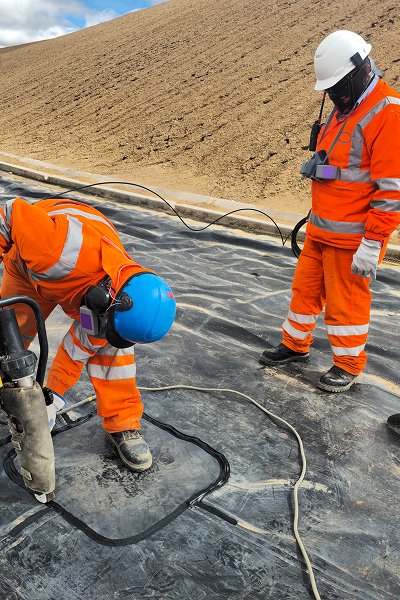
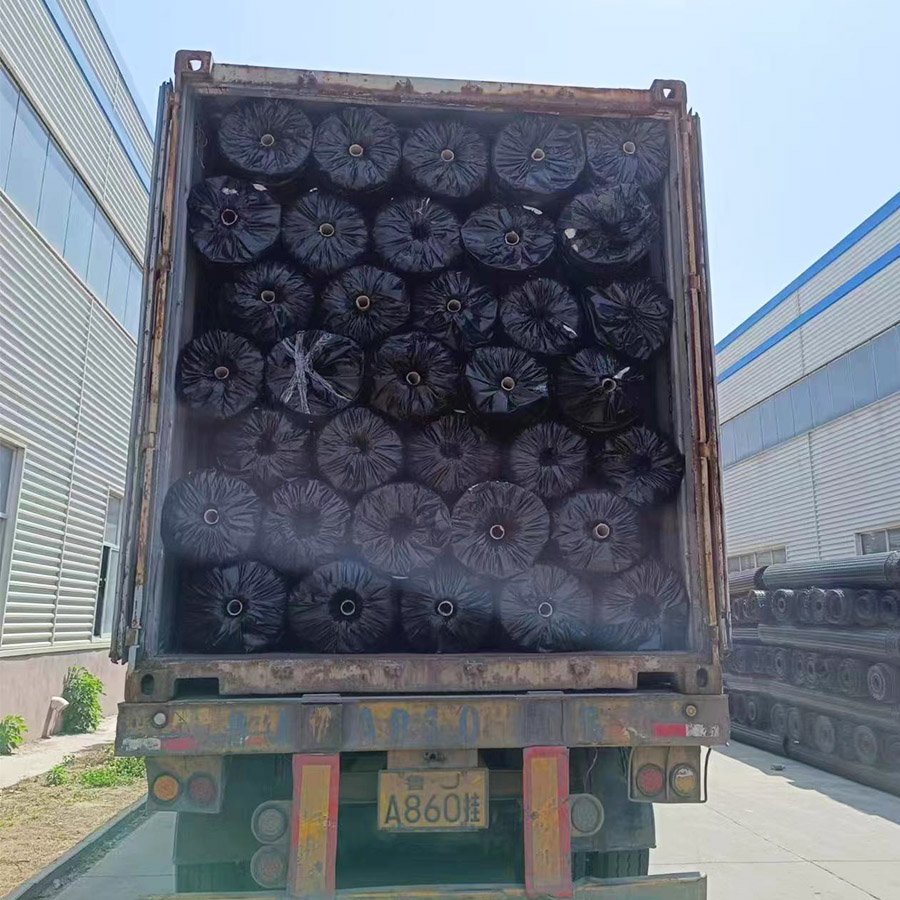
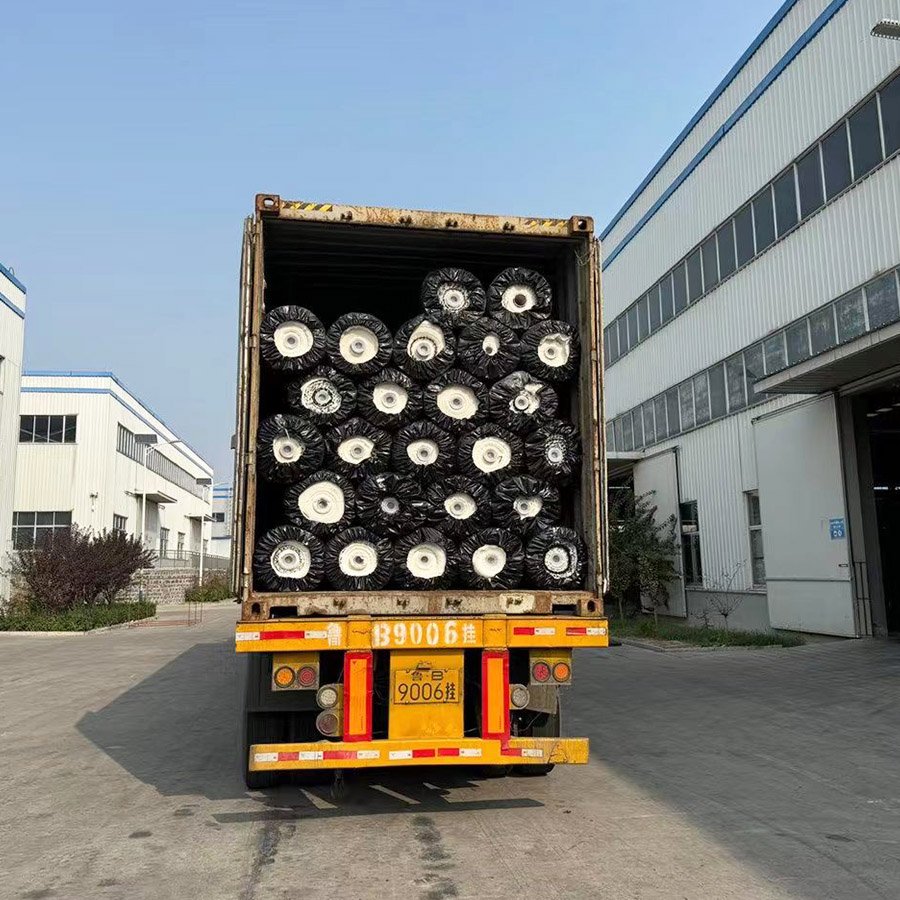
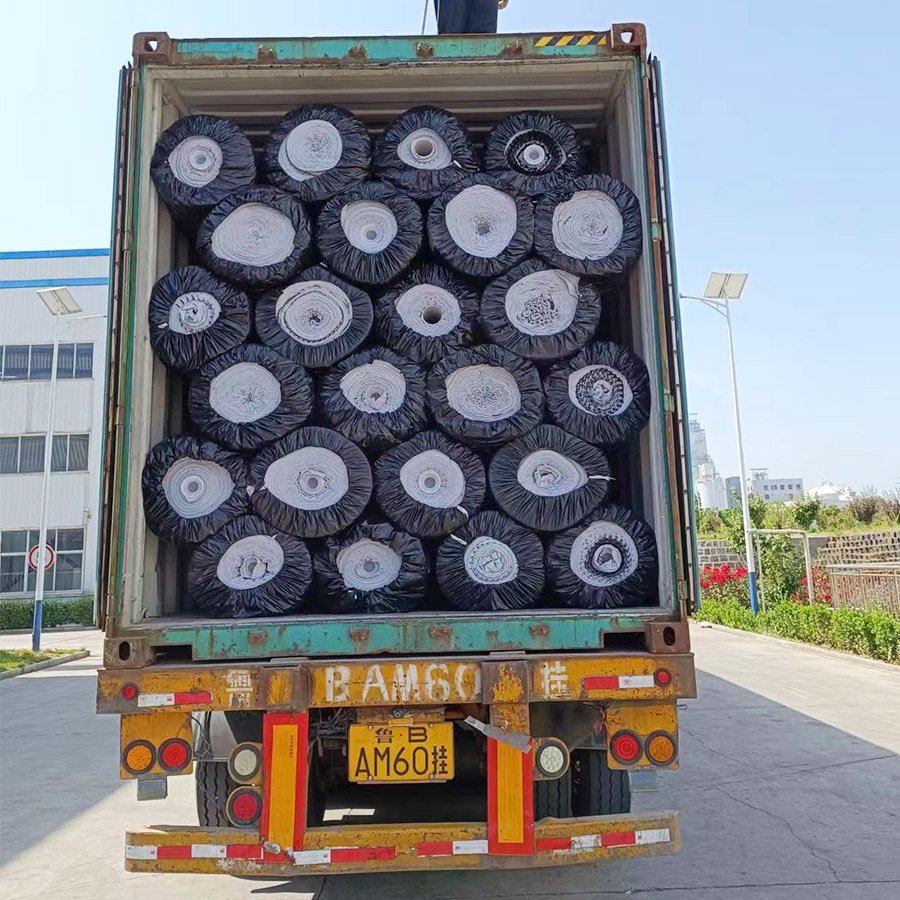
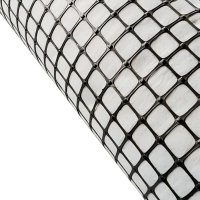


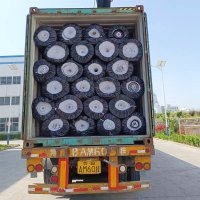
Composite geogrid is a new type of high-strength geosynthetics, usually composed of glass fiber, polyester fiber or plastic geogrid and non-woven fabrics, geotextiles, etc. This product combines the high tensile strength of geogrid with the isolation, filtration, drainage and other functions of geotextiles, and is widely used in engineering fields such as soft foundation reinforcement, roadbed reinforcement, slope protection, etc.
| Geogrid Properties | Test Method | Unit | MD | TD |
| Polymer | PP | |||
| Minimum Carbon Black | ASTMD4218 | % | 2 | |
| Tensile Strength | ASTM D6637 | kN/m | 30 | 30 |
| Tensile Strength@2%Strain | ASTM D6637 | kN/m | 10.5 | 10.5 |
| Tensile Strength@5%Strain | ASTM D6637 | kN/m | 21 | 21 |
| Elongation | ASTMD6637 | % | 13 | 13 |
| Geotextile properties | ||||
| Polymer | PET | |||
| Mass per unit area | ASTMD5261 | g/m2 | 200 | |
| Tensile Strength | ASTMD4595 | kN/m | 13 | 13 |
| Tensile Enlongation | ASTM D4595 | % | 50 | 50 |
| CBR Puncture Strength | ASTM D6241 | N | 2300 | |
| Apparent Opening Size | ASTM D4751 | mm | 0.11 | |
| Roll Dimension | ||||
| Roll Width | m | 3.9/5.9 | ||
| Roll Length | m | 50 | ||
Features:
High tensile strength: Enhances foundation bearing capacity and prevents roadbed settlement and cracks.
Excellent durability: Anti-ultraviolet, corrosion-resistant, and adaptable to acid-base environments.
Good reinforcement effect: Prevents soil deformation and improves overall stability.
Strong composite function: Combines drainage, filtration, and isolation functions, suitable for complex foundation treatment.
Convenient construction: Lightweight and easy to lay, improves construction efficiency, and reduces engineering costs.
Application areas:
Road and railway subgrade reinforcement: strengthen soft soil foundation, improve stability and reduce cracks.
Slope protection engineering: prevent landslides and enhance slope stability.
Water conservancy engineering: used for reservoir and dam slope protection to prevent soil erosion.
Abutment and wharf reinforcement: improve bearing capacity and enhance structural stability.
Landfill: enhance the foundation strength of landfill and prevent settlement.
Mining and tunnel engineering: prevent rock and soil collapse and improve safety.
Customized service:
Size customization: grids of different widths and mesh sizes can be provided according to requirements.
Material selection: glass fiber, polyester, plastic and other materials are available.
Reinforcement type: geotextile, non-woven fabric and other materials can be compounded to improve engineering adaptability.
Brand customization: OEM production is supported, and logo and packaging can be customized.
Special treatment: anti-UV, anti-aging, waterproof and other treatments can be performed to extend service life.
Production scenario:
Automated production line: high-precision equipment production to ensure stable product performance.
Quality inspection: each batch of products undergoes rigorous testing of tensile strength, durability, etc.
Environmentally friendly manufacturing: environmentally friendly materials are used to meet international sustainable development standards.
Shipping scenario:
Fast delivery: national and international logistics distribution to ensure on-time delivery.
Professional packaging: coil packaging is used, which is moisture-proof and dust-proof, suitable for long-distance transportation.
International export support: supports sea, air and land transportation, and can be exported to all parts of the world.




Certification:
ISO 9001 Quality Management System Certification
CE Certification EU Market Compliance Certification
SGS Test Report Quality and Performance Test Certification
ASTM Standards Comply with the standards of the American Society for Testing and Materials
Environmental Testing Report Comply with environmental requirements




FAQ:
Q1: What are the main materials of composite geogrids?
A1: Optional glass fiber, polyester fiber or plastic geogrids, and can be composited with non-woven fabrics, geotextiles and other materials.
Q2: How to choose a suitable composite geogrid?
A2: Select the appropriate tensile strength, composite material type (such as geotextiles, non-woven fabrics) and environmental adaptability according to engineering requirements.
Q3: What is the product life?
A3: Generally up to 50 years or more, the specific life is affected by the environment and material properties.
Q4: Can you provide samples?
A4: Free samples can be provided, and the shipping cost is borne by the customer.
Q5: What environments are composite geogrids suitable for?
A5: Suitable for a variety of extreme environments such as humidity, acidic and alkaline soils, cold or high temperatures.
 Composite Geogrid
Composite Geogrid
Composite geogrid is a new type of high-strength geosynthetics, usually composed of glass fiber, polyester fiber or plastic geogrid and non-woven fabrics, geotextiles, etc. This product combines the high tensile strength of geogrid with the isolation, filtration, drainage and other functions of geotextiles, and is widely used in engineering fields such as soft foundation reinforcement, roadbed reinforcement, slope protection, etc.


